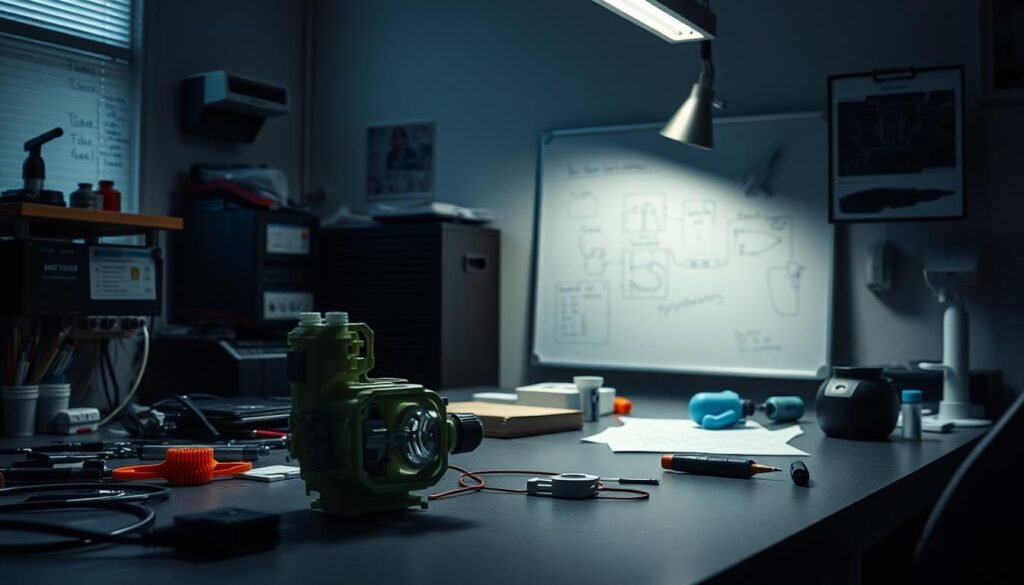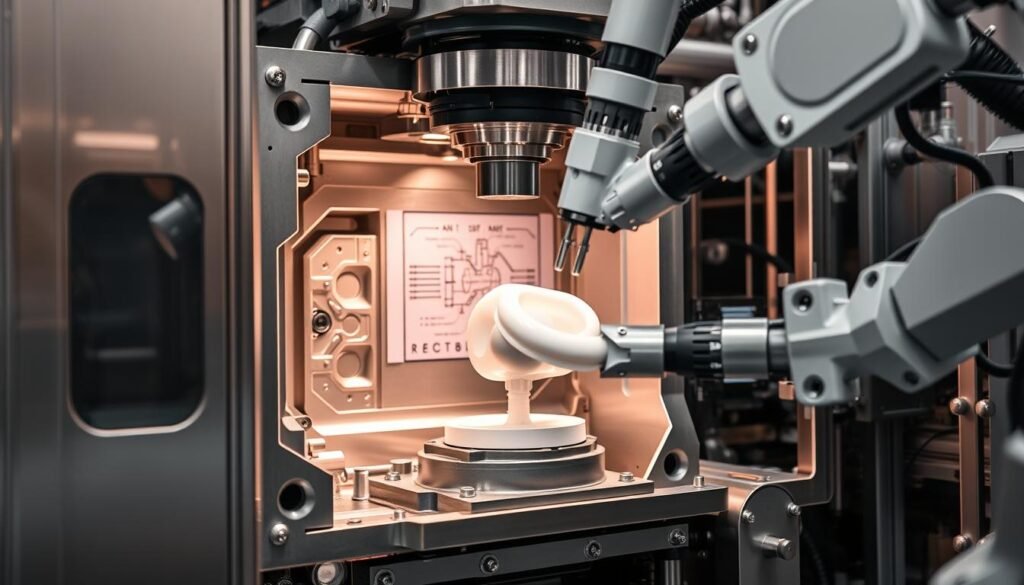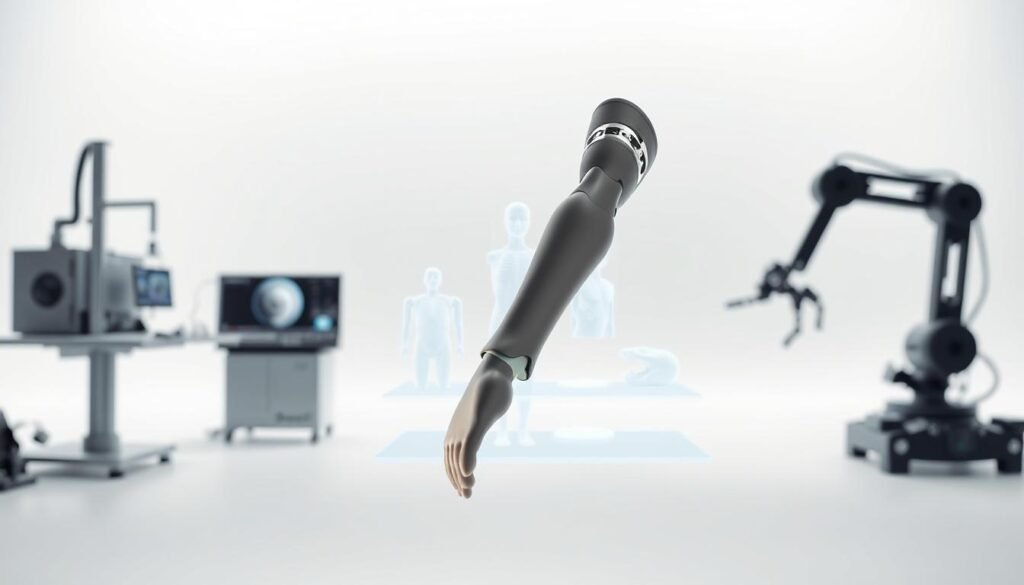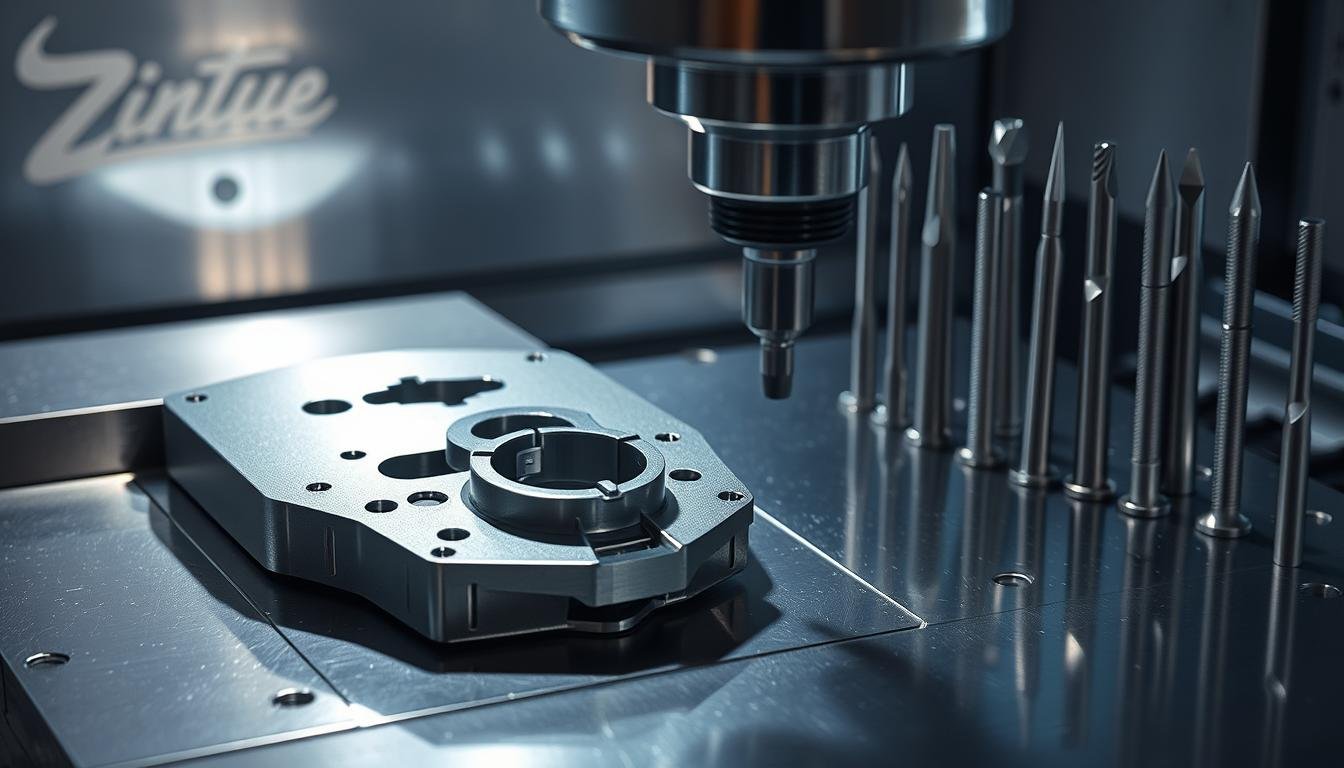Mecanizado CNC is key in the medical field, for making medical device prototypes. It needs to be precise and reliable. Even a small mistake can cause big health problems.
We will look at the tough parts of making medical device prototypes with Mecanizado CNC. We will also talk about Custom Injection Molding. It helps solve these problems and makes patients healthier.
Principales conclusiones
- Mecanizado CNC is vital for achieving high accuracy in creación de prototipos de dispositivos médicos.
- Challenges in CNC machining impact the overall quality and safety of medical devices.
- Adherence to regulatory standards is essential in the manufacturing process.
- Traditional methods are being supplemented by innovative solutions like moldeo por inyección a medida.
- Improved accuracy can lead to better patient outcomes.
Understanding CNC Machining in the Medical Sector
CNC machining is key in the medical field for precision in medical devices. Medical needs are very specific. Every part must be perfect for safety and reliability. CNC machining uses advanced tech to meet these needs.
Importance of Precision in Medical Devices
Being precise in medical devices is very important. A small mistake can cause big problems. CNC machining makes parts with exact fits. This is crucial for devices like implants and tools.
This precision helps devices work better. It also meets strict rules in the field.
Aplicaciones del mecanizado CNC
CNC machining is used in many medical devices. It makes complex shapes in tools and parts for tests. It helps make high-quality products fast.
It’s great for making custom parts and quick prototypes. For more on CNC machining in medicine, check out este recurso.
Key Challenges in Medical Device Prototyping

En creación de prototipos de dispositivos médicos, several big challenges affect product development. Each challenge needs careful thought to meet standards and market needs.
Safety and Regulatory Compliance
Safety and following rules are top concerns. Makers must follow strict rules from groups like the FDA and ISO. This is key to get new devices approved but can be hard.
Inefficient Material Utilization
Using materials well is a big issue. It often leads to a lot of waste. With raw material costs going up, makers must find ways to use less and make more.
Complexity of Device Design and Functionality
Designing complex devices is tough. Making shapes and specs that work well takes time. It’s important to balance new features with what can be made.
Knowing these challenges helps us find better ways to work. We can make things better and follow rules. For more on this, see our look at high-precision machining solutions for the medical.
The Role of CNC Machining in Overcoming Prototyping Challenges

CNC machining is key in the medical world, helping solve prototyping problems. It offers top-notch precision and accuracy, making it vital for making quality medical tools. CNC machining also meets the need for custom medical devices, helping patients get the right fit.
Mayor precisión y exactitud
Medical devices need to be precise. CNC machining makes parts with exact fits, which is vital for medical use. It uses advanced tech for detailed designs, meeting health standards.
With CNC machining, makers can trust their parts meet strict rules. This ensures safety and effectiveness for patients.
Customization and Personalization Capabilities
Custom medical devices are now a big deal. CNC machining lets makers create parts that fit each patient’s body. This makes the design and making process faster.
Companies can check esta página for CNC machining services for their needs.
CNC machining in making medical devices improves quality and speeds up changes. This helps businesses keep up with the demand for new and efficient products.
Custom Injection Molding: A Complementary Solution

In medical device making, Custom Injection Molding is a big plus. It makes benefits of injection molding even better. It lets makers make complex parts with more precision.
This method also cuts down on waste and makes production faster. It’s a great way to meet the detailed needs of the medical field.
Benefits of Custom Injection Molding in Medical Prototyping
Custom Injection Molding brings many good points to medical making:
- It uses more material, which helps save money.
- It can make very detailed designs that other methods can’t.
- It makes production quicker, so things get done faster.
- It works well with materials safe for patients, keeping them safe.
How Custom Injection Molding Addresses CNC Machining Limitations
CNC machining, like precision injection molding, is very accurate. But it has limits in design complexity and speed. Custom Injection Molding helps by:
- Going beyond CNC’s limits in making complex shapes.
- Speeding up production, which shortens time to make things.
- Lowering mistakes from choosing the wrong materials in CNC.
Custom Injection Molding and CNC machining work together. They solve the special problems in making medical devices. This leads to new and better ways to make things.
Innovative Technologies in Medical Device Prototyping

El mundo de creación de prototipos de dispositivos médicos is changing fast. New technologies like Impresión 3D are making a big difference. They help make designs better and production faster. Automation and AI also make CNC machining more efficient and accurate.
3D Printing as a Disruptive Technology
Impresión 3D has changed prototyping in medicine. It lets designers make prototypes quickly. This means they can test and improve their ideas fast.
Impresión 3D has many benefits:
- Reduced production time: Designs can be changed quickly, saving time.
- Cost efficiency: It uses less material, which saves money.
- Geometrías complejas: It can make detailed shapes that others can’t.
Automation and AI in CNC Machining
Automation in CNC machining has made things easier. Adding AI makes it even better. These changes bring more precision and efficiency.
- Mayor precisión: Machines follow rules well, making products consistent.
- Data analysis: AI helps find ways to make production better.
- Escalabilidad: Machines can grow with demand, making more products.
Using these new technologies, makers can make better products. This helps the medical field grow and innovate.
Material Selection Challenges in CNC Machining
In medical device making, material selection in CNC machining is key, mainly for biocompatibility. Makers choose materials that work well with human tissues without harm. It’s hard to meet biocompatibility standards while keeping devices working well.
Biocompatible Materials for Medical Devices
Materials like titanium, stainless steel, and medical plastics are used in medicine. Each has special traits for different needs:
| Material | Propiedades | Usos comunes |
|---|---|---|
| Titanio | High strength-to-weight ratio, excellent biocompatibility | Orthopedic implants, surgical tools |
| 316L Stainless Steel | Corrosion-resistant, machinable | Surgical instruments, temporary implants |
| PEEK (Polyether Ether Ketone) | Chemical resistance, flexibility, moldable | Disposable medical devices, drug delivery systems |
Cost and Scalability of Manufacturing Processes
Even with great properties, cost challenges in medical manufacturing limit material use. Titanium, for example, is perfect but hard to get and expensive. This stops small makers from joining the market. Medical plastics like PEEK are also pricey but stable and flexible.
To solve these scalability of manufacturing problems, we need new ways to get materials. We also need to keep looking for better biocompatible options. Working with suppliers and finding new materials can help. This way, we can make medical devices safely and affordably.
Efficiency in Prototyping and Production Processes
Medical device makers need to be efficient. Advanced CNC technology helps a lot. It makes work faster and keeps quality high.
This tech makes work smoother. It also helps improve how things get done.
Streamlining Workflows with Advanced CNC Technology
Advanced CNC machining does a lot:
- It keeps work going without stopping.
- It uses CAD and CAM software for better plans.
- It makes sure everything is precise and meets rules.
This makes work more efficient. It means better quality and more done.
Minimizing Waste Through Effective Material Utilization
Reducing waste is key. Using materials well saves money and is good for the planet. Here’s how:
- Advanced coolants keep machines at the right temperature.
- Good waste management helps recycle more.
- CNC tech cuts down on human mistakes.
This way, we make better medical devices. It also helps the environment. Companies save a lot by doing this.
Future Trends in CNC Machining for Medical Devices
CNC machining for medical devices will change a lot in the future. New technologies and market changes will drive these changes. The advancements in machined technologies will make making medical devices better and faster. The impact of emerging markets is also big. We need to use new ideas wisely to stay ahead.
Advancements in Machining Technologies
New machining tech is changing medical devices. It includes:
- High-speed machining that makes things faster
- Multi-axis machining for complex shapes
- Real-time monitoring for better quality
These new techs mean better and quicker making of medical devices. This is key for quick making and meeting tight deadlines in the medical world.
Emerging Markets and Their Impact on Prototyping
Emerging markets will greatly affect CNC machining’s future. They will bring:
- More need for innovations in medical devices for different areas
- Chances for cheaper making that fits many markets
- More competition for better and faster tech
In this changing world, being flexible and quick to market needs is key. Knowing these trends helps us stay ahead in CNC machining.
Conclusión
CNC machining is key in making medical devices. It helps solve many challenges in the field. Choosing the right materials and making things precise are big tasks. We also have to follow strict rules.
Using Custom Injection Molding and 3D printing with CNC can help a lot. It makes things better, cheaper, and safer for patients. Making things more efficient and cutting down on waste is also important.
The future of making medical devices looks bright. New tech and materials will bring new ideas. We need to focus on making things just right and following rules closely. This way, we can make devices that are safe and work well for everyone.
PREGUNTAS FRECUENTES
What is CNC machining and why is it important in the medical sector?
CNC machining uses computer tools to make precise parts for medical devices. It’s key because it makes parts that are safe and reliable for patients.
How does Custom Injection Molding complement CNC machining in medical device manufacturing?
Custom Injection Molding makes complex parts more efficiently. It also reduces waste and uses materials well. This makes the production process better and improves medical device quality.
What are the key challenges faced during medical device prototyping?
Challenges include making sure devices are safe and meet rules. It’s also hard to use materials well and design complex devices. These problems can slow down development and lower product quality.
What are the advantages of 3D printing technology in medical device prototyping?
3D printing makes prototypes faster and cheaper. It lets designers try new ideas quickly and use materials better. This helps make production more efficient.
Why is material selection crucial in CNC machining for medical devices?
Choosing the right materials is key for safety and function. Materials like titanium and medical plastics must be safe. This affects how well devices work for patients.
How can manufacturers improve efficiency in their prototyping processes?
To get better, use the latest CNC tech and streamline workflows. Also, use materials wisely and manage waste well. This keeps the work area clean and efficient.
What future trends should manufacturers watch in CNC machining for medical devices?
Watch for new machining tech like high-speed and multi-axis systems. Also, look for real-time monitoring. These will make production faster and meet new market needs.


